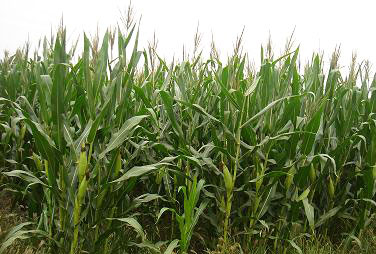Spring corn refers to corn sown in the spring. Because the sowing date is early, farmers in northern China also call it early corn. In order to grow good spring corn and achieve bumper harvests, in addition to field management, fertilization technology is critical, and the following points should be achieved:

1, widely applied organic fertilizer. Spring maize is a high-yielding crop, and its level of production is closely related to the level of soil fertility. In the spring maize high-yield and high-efficiency fertilization measures, the first is to extensively apply organic fertilizers to improve soil fertility, generally 1500-2000 kg of organic fertilizer per acre. Unfamiliar human and animal feces contain eggs and bacteria, which will not only produce root diseases, but also spread soil-borne diseases. Moreover, no decomposed human or animal feces will be secondarily fermented under the action of soil anaerobes. Causes burning of roots and burning of seedlings. Fertilizer utilization is low. Practice has shown that the treatment of manure and livestock manure by the treatment of the Golden Baby Ferment Fertilizer not only reduces the amount of organic fertilizer but also eliminates bacteria in human and animal feces after high temperature fermentation. And eggs, improve fertilizer utilization, avoid burning root burning seedlings and soil-borne diseases. With the application of the microbial fertilizer, it can balance the microbial flora in the soil environment, supplement the trace elements taken from the soil in each season, extend the fertilizer and avoid the phenomenon of re-twisting.
2, stable nitrogen fertilizer. Spring corn must be applied with base fertilizer to regulate the amount of topdressing fertilizer. High-yield M. persicae should be stabilized at 9-12 kilograms; nitrogen for medium-yielding fields should be stabilized at 7-10 kilograms; and nitrogen for low-yield fields should be stable at 6-8 kilograms. Because the nitrogen fertilizer is volatile and wet, and the utilization rate is low, in order to increase the nitrogen fertilizer utilization ratio, 1-2 kilograms of the microbial fertilizer can be applied per acre.
3, control of phosphate fertilizer. The utilization rate of phosphate fertilizer is low, and it is easily adsorbed and fixed in the soil gap. Therefore, the application of phosphate fertilizer should be based on the content of available phosphorus in the soil to reasonably determine and control the dosage. In the three high-, medium-, and low-yield fields, the appropriate amount of phosphate fertilizer per acre should be controlled within the range of 7 kg, 6 kg, and 5 kg respectively. Spring corn phosphate fertilizer is generally applied as base fertilizer and organic fertilizer. In the soil, 1-2 kilograms of the microbial fertilizer combined with the golden babe can effectively reduce the "impurity bleaching disease" caused by zinc deficiency in the maize seedlings, increase the root absorption capacity, and promote fibrous root growth.
4, increase potassium fertilizer. With the rapid decline of soil available potassium, the area of ​​potassium deficiency continues to expand. In order to meet the demand of corn for the growth of potassium, potassium fertilizer must be fully applied. The suitable amount of potash fertilizer in high-yielding fields is about 8 kg per mu, the middle production field is about 7 kg, and low-yield fields are about 6 kg. During the corn big bell stage, potassium fertilizer can be properly added, which can effectively improve the lodging resistance of spring corn, promote the formation of carbohydrates and full corn grain in the later period.
5, make-up application of fertilizer. Due to the improvement of maize varieties, the reform of farming system and the change of fertilizer structure, the deficiency of trace elements in soil is becoming more and more obvious, especially the lack of boron and zinc caused by corn at the flowering stage. Therefore, you can use borax and zinc phosphate to infiltrate the corn before sowing, or take the golden babe microbial fertilizer to infiltrate and soak the supernatant to prepare the seed. You can also apply 1-2 kg of zinc sulphate, 1-2 kg of borax, or golden treasure. Microbial fertilizer is 1-2 kilograms, and spraying foliar zinc and other foliar fertilizers at the flowering and booting stage of corn can not only supplement the trace elements needed by corn, but also achieve significant yield increase. Details can be consulted: Beijing Huaxia Kangyuan Technology Co., Ltd. telephone toll-free hotline
Recommended reading
1. High-yield fertilization management technology for summer corn
2. The top ten advantages of Golden Baby microbial fertilizer
Ophthalmology Scanner,Ophthalmic Equipment,Eye Ultrasound Scanner,Ophthalmic Windows Based Scanner
Guangzhou Sonostar Technologies Co., Limited , https://www.sonoeye.com